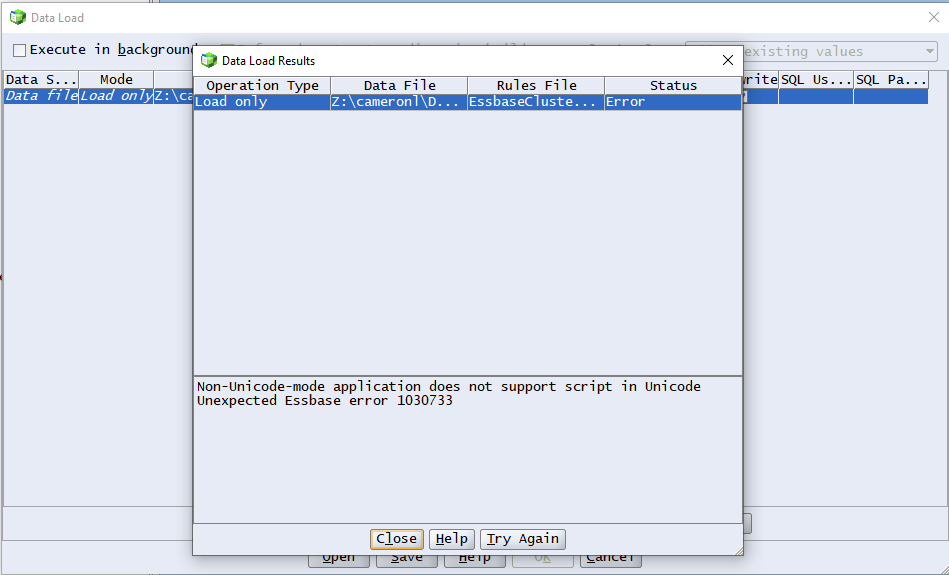Don’t. Don’t do it.
Or at least don’t if you work in a Latin character country like the Good Ol’ U-S-of-A. And it ain’t Unicode, not really, but instead it’s UTF-8. Yr. Obt. Svt. is not going to try to even attempt to explain what UTF-8 is and instead suggests that you enjoy Joel On Software’s explanation. I encourage you to Read The Whole Thing.™ as any blog post that goes into high- and low-endian byte orders has to be good. At least I think so but perhaps I need to get a life. Don’t be intimidated (or bored beyond description) – he really did write an excellent article and I think I almost understand it. Almost.
A note: Planning cloud applications are all Unicode but this is an on-premises tale, even in 2020.
Safely ensconced in the on-premises world (which isn’t going away any time soon I might note), why shouldn’t you create a (not-really) Unicode application? Because this when one tries to import Essbase data (this is on-premises) from a not-really Unicode application to a plain old “normal” one. Bugger. But why?

Test was created in Unicode, Development and Production were not. Of course. So when it